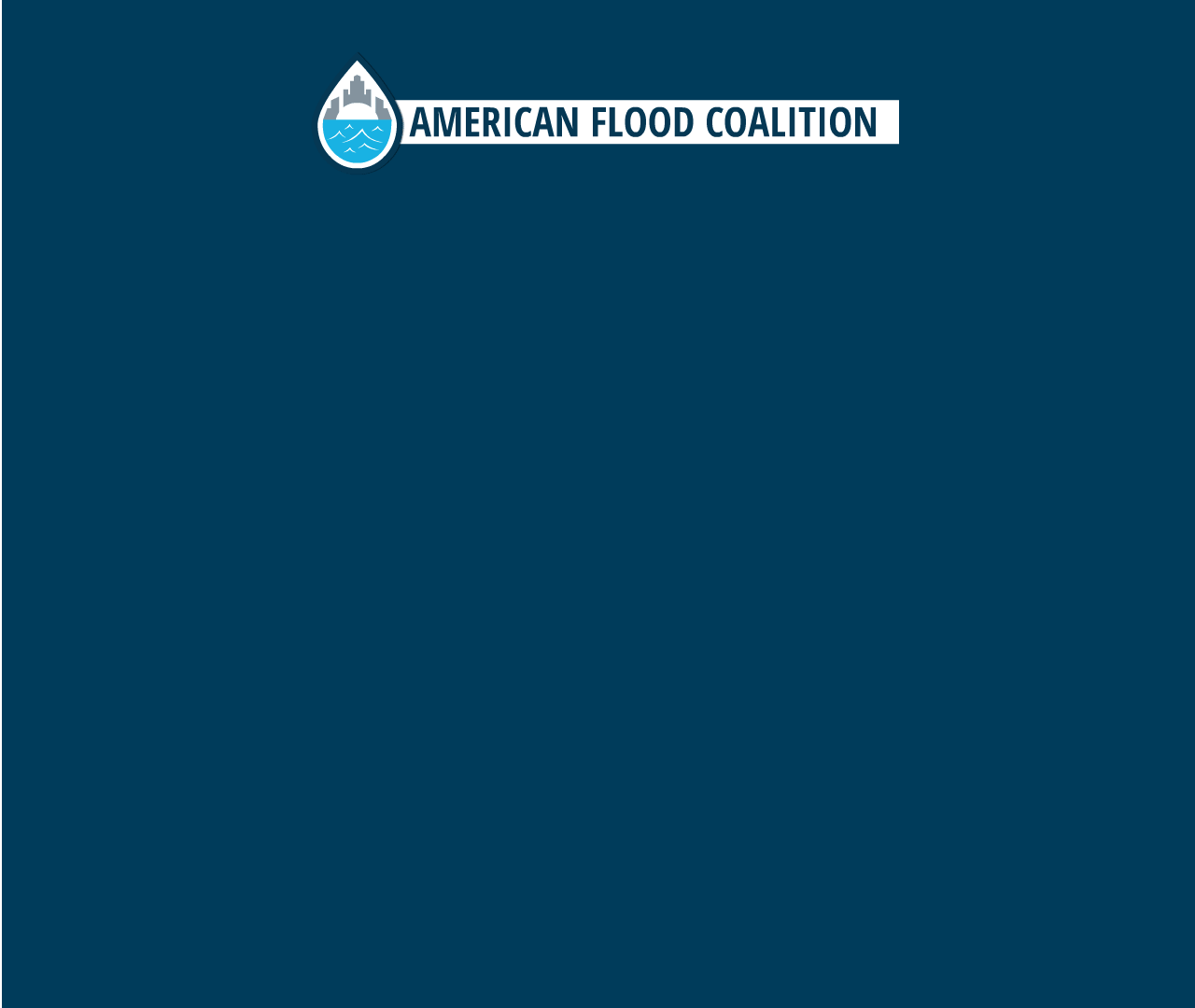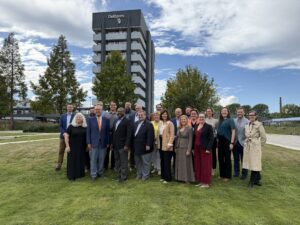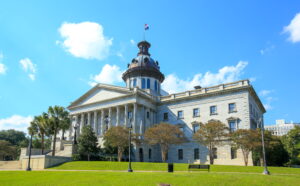November 15, 2021
—
After months of negotiations, Congress passed the $1.2 trillion bipartisan Infrastructure Investment and Jobs Act, signed into law by President Biden on November 15. The law is not only monumental in its scope — $550 billion in new federal spending — but it also marks a historic investment in the country’s flood resilience.
This is especially important as flooding is the country’s costliest and most frequent disaster. This year, flooding across the country — from hurricanes overwhelming the Gulf and East Coasts to flash floods inundating Middle Tennessee — has cost billions of dollars. While the financial costs are staggering, these disasters exacted an even higher toll in terms of lives lost and communities upended.
The new infrastructure funding will help communities prepare for future impacts, while reducing the crippling costs of disaster recovery. The investment will also create jobs and spur economic growth that strengthens communities: Research from AFC and Johns Hopkins University finds that every $1 billion invested in flood resilience can create up to 40,000 jobs.
Last spring, AFC unveiled a blueprint for a dozen comprehensive priorities that would commit at least $38.2 billion to enhance flood mitigation, resilience, and disaster preparedness programs in the U.S. Of that proposed funding, roughly $34.7 billion made it into the bipartisan package.
In this post, we’ll outline the key flood resilience measures included in the new law, and most importantly, what these measures mean for communities on the frontlines of flooding.
What’s in the law and what it means for communities:

First, the law provides federal funding for several new resilience measures. These measures will help communities adapt to higher seas, stronger storms, more frequent flooding and include the following programs:
- PROTECT grant program: The law establishes an $8.7 billion program to upgrade and reinforce existing transportation infrastructure to better withstand extreme weather.
- What it means for communities: This new program will offer communities additional funding to harden transportation infrastructure and prepare for future disasters through, for example, upgrades to emergency evacuation routes.
- Resilience accelerators: The law authorizes $500 million for regional technical hubs that will provide expertise to communities and help them build capacity to apply for grants to fund flood resilience projects.
- What it means for communities: Hubs will especially help smaller, rural, and underserved communities that often lack the technical expertise or resources to apply for and secure federal or state funding.
- STORM Act: The law invests $500 million for a new FEMA program that will help states establish revolving loan funds for resilience projects.
- What it means for communities: Low-interest loans will be an accessible funding source for counties and local governments to tackle projects that reduce flood risk.
Second, the law invests in proven, existing flood solutions. These measures will allow communities to use funding to support projects that they know work and will include the following programs:
- BRIC grant program: The law injects $1 billion into FEMA’s Building Resilient Infrastructure and Communities (BRIC) program, which funds community-level projects that build resilience before disasters strike.
- What it means for communities: During BRIC’s first year, demand for funding far outstripped available dollars, with applications totaling $3.6 billion for just $500 million in funding. Increasing BRIC resources will deliver many more essential projects and expand resilience at the local level.
- Sewer overflow and stormwater grants: The law authorizes $1.4 billion for Environmental Protection Agency grants that help communities upgrade aging sewer systems that routinely overflow during storms.
- What it means for communities: These resources will help over 800 municipalities that have identified combined sewer and stormwater system overflows as a priority pollution concern.
- Army Corps projects: The law invests roughly $17.1 billion to help the United States Army Corps of Engineers jumpstart construction on projects that reduce flood risk.
- What it means for communities: Facing a $96 billion project backlog, this funding will provide the Corps with additional resources to tackle a range of projects that address flood risk and other hazards nationwide.
- Flood Mitigation Assistance program: The law directs $3.5 billion for FEMA’s Flood Mitigation Assistance program, which provides grants for projects that reduce flood risk to buildings insured by the National Flood Insurance Program (and therefore decreases claim payouts).
- What it means for communities: At the local level, more grants will be available for flood-reduction projects, including those that protect critical infrastructure, such as water, sewer, and utility systems.
- Coastal resilience programs: The law invests roughly $2 billion across several National Oceanic and Atmospheric Administration programs that help coastal communities respond to flood risk, sea level rise, and coastal erosion.
- What it means for communities: These programs will provide pivotal resources, data, modeling, and technical support to communities, as well as funds for coastal projects that reduce flood risk, such as restoration of wetlands.
What to expect and how to prepare
Now that the bipartisan infrastructure law has invested much-needed resources in resilience, the next step is to ensure communities can access these funds. Given the law’s range of investment between new and existing programs, not all of the funding will be immediately available. Some programs will still need to be implemented, while others will need annual funding by Congress.
President Biden announced that Mitch Landrieu, former mayor of New Orleans and lieutenant governor of Louisiana, will oversee the disbursement of funds from the infrastructure package. From his work in Louisiana, Landrieu comes to the role with significant experience in flood resilience and disaster recovery.
AFC will keep members updated on how to access these resources. Meanwhile, to prepare for these federal funds, communities should consider the following:
- Review and evaluate local planning, such as master plans and stormwater master plans, to consider projects that might be a good fit for federal funding.
- Ensure that your community’s Hazard Mitigation Plan is up to date. To receive funding from certain FEMA grant programs, communities must have a FEMA-approved hazard mitigation plan by the application deadline.
- Seek community input on potential projects. Getting buy-in from community members early on will streamline the process and lead to a stronger project plan.
- Proactively engage members of underserved and underrepresented communities to understand the impacts of potential projects. For an example of an equitable approach to flood resilience, view this recent blog post; and for considerations for equitable policymaking, view our Conversations With Communities guide.
- Turn to AFC resources, such as the Flood Funding Finder to find existing federal grants and the Adaptation for All guide, which highlights many flood resilience projects that could be supported by federal funds.
What’s next for Congress
The bipartisan infrastructure law wasn’t the only major infrastructure bill before Congress. Another broader package, known as the Build Back Better Act, would provide additional funding for flood resilience. Democrats are hoping to pass this more expansive package through budget reconciliation, a process that allows Congress to pass legislation with simple majorities in the House and Senate. AFC will keep members updated on its status.
—
The Infrastructure Investment and Jobs Act marks a historic step toward building greater flood resilience nationwide. As the country faces the increasing impacts of stronger storms and rising seas, the package’s infusion of federal funds will help create safer, stronger, and more resilient communities.






